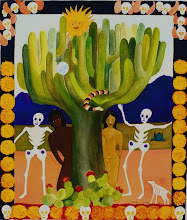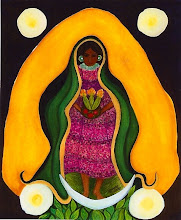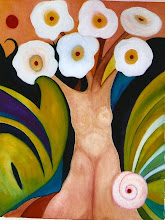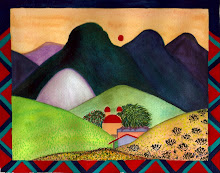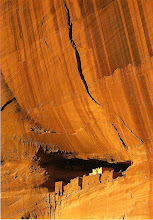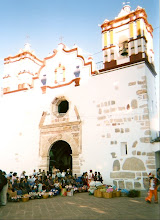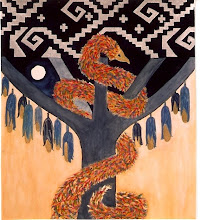 Gouache painting "Zapotec Star Figure: the Pleiades"
Gouache painting "Zapotec Star Figure: the Pleiades" This painting was inspired by a stone carving I found at a museum in Oaxaca. The carving was the figure with a sun/moon eclipse face on a block of stone. The figure looks like a dancer. I added the thunderbolt symbols to symbolize energy, and spirals representing stars.
A young Zapotec looked at it and told me that the figure represents the Pleiades, a star group really important to Mesoamerican cultures. The Zapotec culture at Oaxaca may have created the first Mesoamerican calendar.
I feel a connection to the Pleiades, that tiny kite formation that travels across the northern winter night sky.
Pleiades Fly Overhead (poem)
As if time itself has meaning
and space lies beyond it.
or, as if the brevity of a single breath
encompasses a moment of
recognition.
Words distract the truth.
Freedom distills moments.
Divine liquor drops onto our
parched tongues.
Whether it is a god of suffering,
a compassionate mother of all beings,
or a flash of colliding angels,
Awestruck, dumb
Grace enters us,
The clear light.
Oaxaca, 1990
(The Pleiades has a 52 year cycle. The Sun, Moon, and Venusian calendars also come together every 52 years. 52 years is the “century” cycle of the old Mesoamerican calendars-- Zapotec, Toltec, Mayan, Aztec etc. A new cycle was celebrated every 52 years. The Pleiades is also tied to the annual agricultural cycles of Mesoamerican and Mediterranean Cultures)

























